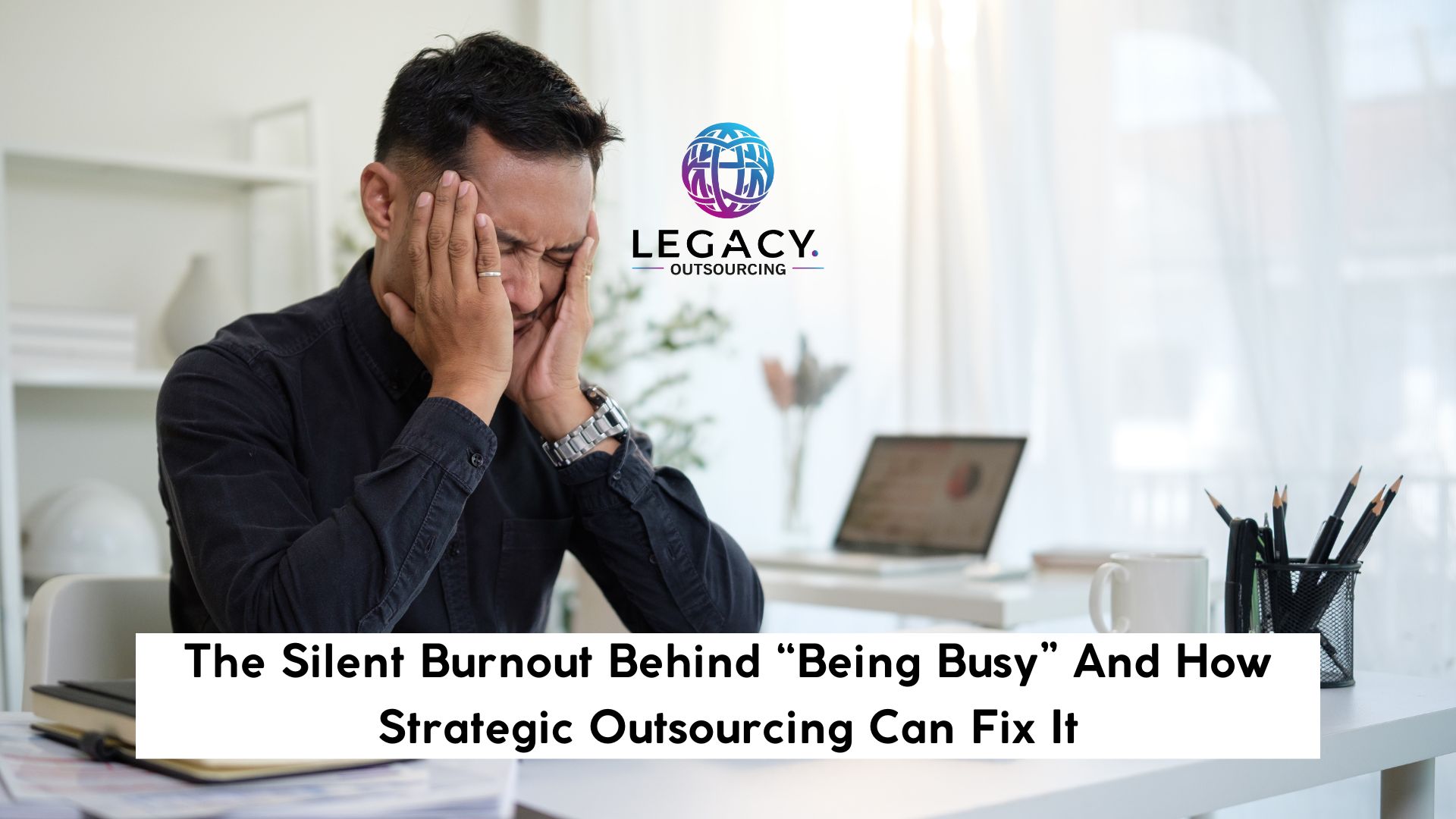Introduction: Why Employee Wellbeing is a Business Priority in 2025
In 2025, employee wellbeing isn’t just a perk—it’s a performance strategy. Forward-thinking businesses understand that supporting mental health, physical wellness, and emotional resilience leads to stronger teams and better business outcomes. But how do you actually measure wellbeing at work?
That’s where Key Performance Indicators (KPIs) come in. These metrics provide tangible data to help HR teams, managers, and leadership evaluate employee satisfaction, burnout risk, and engagement—before problems escalate.
Below, Legacy Outsourcing breaks down the top 7 KPIs you should be tracking to build a thriving, productive, and loyal workforce.
1. Employee Absenteeism Rate
What it tells you: How often employees are missing work due to illness, stress, or disengagement.
High absenteeism can be a red flag for burnout or a toxic work environment. By tracking trends, businesses can respond with targeted health, flexibility, or wellness programmes.
Formula:(Number of Absences ÷ Total Workdays) × 100
2. Employee Turnover Rate
What it tells you: If people are leaving faster than you can replace them.
This KPI is key to understanding how supported and valued employees feel. A rising turnover rate could indicate wellbeing issues, especially if exit interviews mention stress, overwork, or lack of support.
Formula:(Number of Departures ÷ Average Number of Employees) × 100
3. Employee Net Promoter Score (eNPS)
What it tells you: Would your employees actually recommend your company as a great place to work?
The eNPS is a fast, effective way to gauge employee sentiment. A low score may indicate underlying issues with culture, leadership, or wellbeing.
How to calculate:
Survey: “On a scale of 0–10, how likely are you to recommend this company as a place to work?”
Score = % Promoters (9–10) – % Detractors (0–6)
4. Employee Engagement Index
What it tells you: Are your people motivated and emotionally invested in their work?
This composite metric uses responses to engagement surveys covering satisfaction, purpose, and recognition. High engagement usually correlates with better wellbeing and productivity.
Pro tip: Use quarterly anonymous pulse surveys to track sentiment trends over time.
5. Participation in Wellbeing Initiatives
What it tells you: Are your efforts actually being used?
Offering yoga classes or mental health support is great—but only if people participate. Monitor enrolment in wellness programmes, EAP (Employee Assistance Programme) usage, or health screenings to measure ROI and interest.
6. Work-Life Balance Score
What it tells you: Are your employees burning out or thriving?
Collected via self-reporting surveys, this KPI highlights whether employees feel they have enough time and energy to manage both personal and professional responsibilities.
Sample survey question:
“On a scale from 1–10, how would you rate your current work-life balance?”
7. Stress and Burnout Levels
What it tells you: How close is your team to emotional overload?
You can track this via anonymous wellbeing check-ins, HR data (e.g. leave requests, grievances), or digital wellbeing tools. High stress can lead to absenteeism, disengagement, or even turnover.
Early intervention = long-term retention.
How Legacy Outsourcing Supports Employee Wellbeing for Businesses Like Yours
At Legacy Outsourcing Ltd, we help businesses go beyond spreadsheets and metrics—by embedding real, meaningful wellbeing strategies into your operations.
From HR process automation and outsourced employee support to performance dashboards that track KPIs in real time, our services are designed to reduce admin burden, unlock actionable insights, and drive better employee outcomes.
– Need help measuring what matters?
– Want to turn wellbeing into a strategic advantage?
Let’s talk. Email us at outsourcing@legacyinvestors.co.uk or follow us on LinkedIn and Instagram.
FAQs
Q: How often should we track employee wellbeing KPIs?
A: Monthly or quarterly tracking is ideal. Combine real-time dashboards with pulse surveys for a complete view.
Q: Can we track wellbeing KPIs with small teams?
A: Absolutely. Even small teams benefit from structured check-ins, eNPS surveys, and transparent communication.
Q: How can outsourcing help with wellbeing?
A: Outsourcing reduces internal workload and stress—allowing your team to focus on meaningful, balanced work. Plus, we can automate reporting and admin-heavy HR tasks.
Employee wellbeing is the foundation of a high-performance team. With the right KPIs, businesses can proactively identify challenges, strengthen culture, and build trust. If you’re ready to take wellbeing seriously in 2025, Legacy Outsourcing is here to help you do it right.

